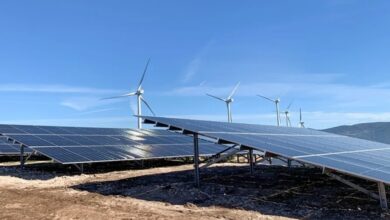Research Confirms That Bogotá Could Be Supplied With Geothermal Energy
It is a type of energy that takes advantage of the heat reserves that are stored under the earth's crust. In addition, it is a sustainable alternative for decarbonization, which cities should promote

Photo: Flickr-Lydur Skulason – Reference Image
LatinAmerican Post | María Fernanda Ramírez Ramos
Listen to this article
Leer en español: Investigación confirma que Bogotá podría abastecerse con energía geotérmica
An investigation analyzed the potential of three megacities (Bogota, Los Angeles and Jakarta) to implement geothermal energy. The study found that in the Sabana de Bogotá, between the cities of Zipaquirá and Paipa, there is an ideal area to extract energy from the earth. "The analysis of the geothermal potential for the megacities: Bogotá, Los Angeles and Jakarta, reveals that the estimated RGB can satisfy the current residential energy consumption", according to the research conclusions.
What is geothermal energy?
Geothermal energy is a type of renewable energy that takes advantage of the internal heat that the earth stores. This can be produced by various means, such as groundwater or rocks. In the case of Bogotá, this heat is produced because it is located in a wide region known as the ring of fire, which is characterized by the presence of numerous volcanoes.
"Geothermal energy is one of the few renewable energy sources capable of constantly producing electricity 24 hours a day," notes the World Bank. According to this institution, it is a very attractive energy alternative for Latin America. It is much cleaner energy, which could help replace the energy that produces high carbon emissions. However, the difficulty lies in its initial cost of implementation, which many countries are not in a position to assume."
Geothermal energy, decarbonization opportunity
"Geothermal is a base-load technology that increases grid stability and meets important energy resilience needs, without intermittence or additional storage costs, which wind and solar cannot offer. This leads us to state that, in the future, geothermal power may provide flexibility with dispatchable power to megacities as geothermal power plants are developed," the megacities research notes.
It also points out that geothermal power plants take up less space and do not have as much impact on the landscape compared to other renewable energies such as solar or wind. Another conclusion of the study is that if an energy system of this type is implemented, with low carbon emissions, it is possible to achieve almost zero emissions by 2050. For this reason, the researchers assure that it would allow the quality of life of many people to be increased through the reduction of energy poverty.
“Geothermal energy has greater stability –having sufficient resources– than other energies such as hydroelectric or hydraulic –because in times of drought there are problems of storage and reserve of this resource–, solar energy –since its recharge depends on the moment of the day in which the sun's rays provide it– and wind power, whose operation is subject to specific currents at certain times of the year”, says researcher Carlos Vargas, in a publication from the National University.
The article entitled "Geothermal energy as a means to decarbonize the energy mix of megacities", published in Nature Magazine, was developed by researchers from the National University of Colombia, the Friedrich Alexander University in Germany, and the Faculty of Geography, Geology and Environment at Keele University, UK.
Perspectives in Latin America
In 2020, the Inter-American Development Bank presented the report "Use of geothermal potential in Latin America and the Caribbean: a perspective on the way forward ". In it, it is indicated that only Chile, Bolivia, Costa Rica, El Salvador, Mexico, Guatemala, Nicaragua, Honduras and Guadeloupe had the capacity to produce geometric energy as of June 2020. "12 Latin America and the Caribbean hold great promise for geothermal energy development. The region has geothermal potential of between 11 GW and 55 GW (Berman, 2018), which remains mostly untapped. However, with some notable exceptions—like Mexico, El Salvador, and Costa Rica, for example—progress has been slow.
It is expected that in the coming years more projects will be developed in the region and that they will be done safely to ensure the decarbonization of energy on the continent , while working on other green energies.




